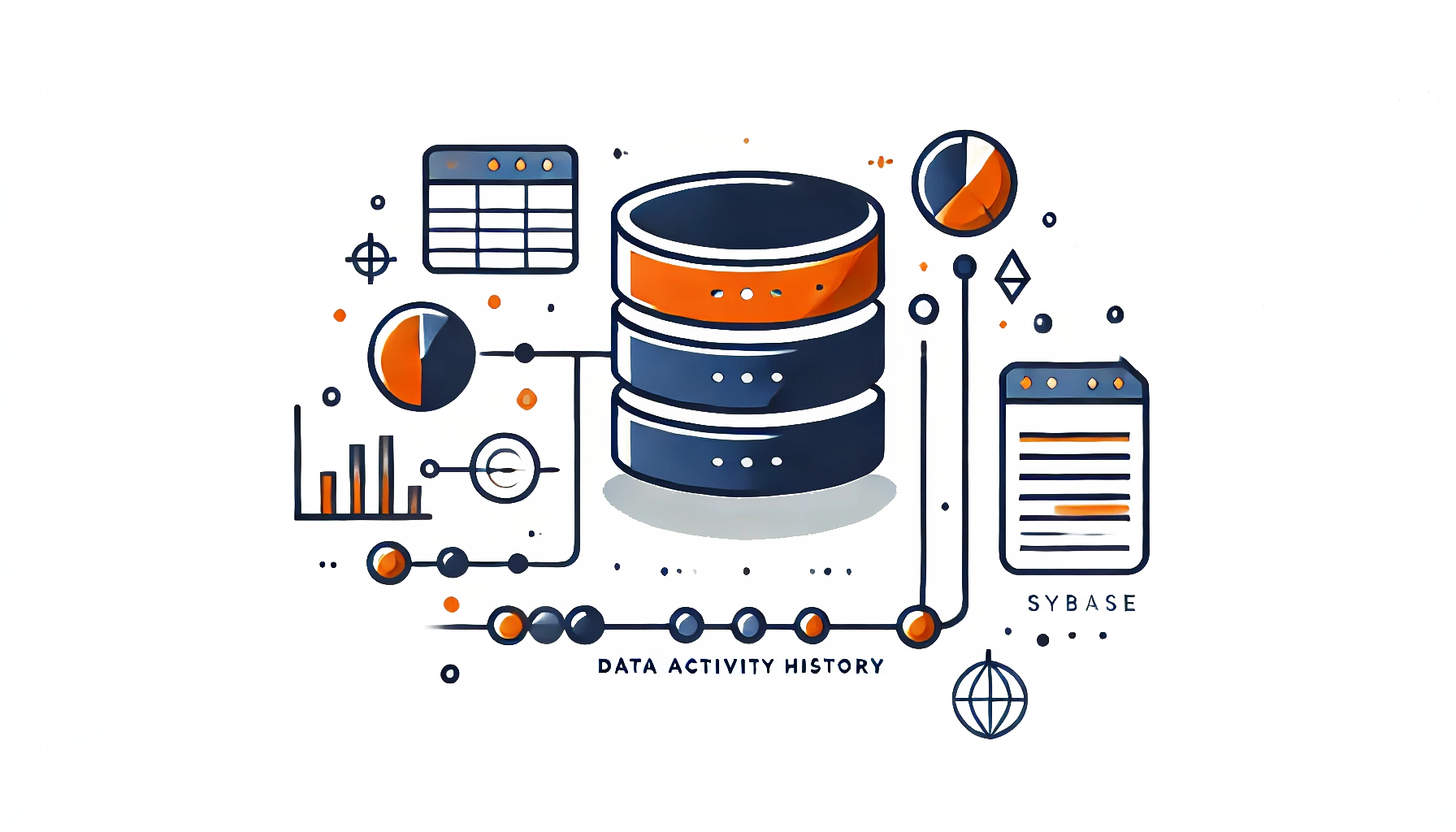
Tracking and Managing Sybase Data Activity History

Now in the digital landscape, data is a key asset for any organization. Ensuring its security and compliance while monitoring user activity is a top priority. Sybase, a robust relational database management system, provides powerful capabilities for tracking database activity. By using SQL features such as triggers, views, and stored procedures, administrators can build an efficient auditing system to monitor and safeguard their database.
This guide explores how Sybase supports data activity history tracking and provides practical examples for implementing robust data auditing practices. Additionally, we’ll highlight how advanced solutions like DataSunrise complement these built-in features.
Why Sybase Data Activity History Matters
Sybase data activity history allows organizations to track all operations within a database, including schema changes, user logins, and data modifications. This information is essential for:
- Compliance: Regulations likeGDPR, HIPAA, and PCI-DSS require detailed auditing to protect sensitive information.
- Security: Monitoring database activity helps detect unauthorized access or suspicious behavior.
- Operational Oversight: Understanding user actions enables better troubleshooting and accountability.
By leveraging Sybase’s built-in features, organizations can ensure a secure and compliant data environment.
Key Features for Sybase to Tracking Data Activity History
Sybase offers multiple native features to facilitate comprehensive data auditing. Here’s how these tools contribute to tracking data activity history:
1. Triggers for Automated Data Monitoring
Triggers in Sybase enable the automatic logging of changes to database tables. They ensure that key operations like inserts, updates, and deletes are recorded without manual intervention.
Example: Logging Changes to a Customer Table
CREATE TRIGGER LogCustomerChanges ON Customers FOR INSERT, UPDATE, DELETE BEGIN INSERT INTO AuditLog (event_type, user_id, timestamp, table_name) SELECT CASE WHEN EXISTS (SELECT * FROM inserted) AND EXISTS (SELECT * FROM deleted) THEN 'UPDATE' WHEN EXISTS (SELECT * FROM inserted) THEN 'INSERT' ELSE 'DELETE' END, SYSTEM_USER, GETDATE(), 'Customers'; END;
This trigger captures every modification to the Customers table and logs it into the AuditLog table.
2. SQL Views for Simplified Analysis
SQL views consolidate data from audit tables into a single, queryable interface, allowing administrators to identify key events quickly.
Example: Creating a View for Audit Logs
CREATE VIEW AuditSummary AS
SELECT event_time, username, event_type, object_name
FROM sybsecurity..sysaudits_01
WHERE event_type IN ('INSERT', 'UPDATE', 'DELETE');This view focuses on critical database activities, eliminating irrelevant details and simplifying analysis.
3. Stored Procedures for Audit Log Management
Stored procedures automate recurring audit tasks like archiving old logs or generating reports.
Example: Archiving Audit Logs Older Than Six Months
CREATE PROCEDURE ArchiveOldLogs AS BEGIN INSERT INTO AuditLogArchive SELECT * FROM AuditLog WHERE event_time < DATEADD(month, -6, GETDATE()); DELETE FROM AuditLog WHERE event_time < DATEADD(month, -6, GETDATE()); END;
This procedure ensures the audit log remains manageable while preserving essential historical records.
Enhancing Sybase Data Auditing with DataSunrise
While Sybase’s built-in features are robust, managing audits in large-scale or multi-instance environments can be complex. DataSunrise, a leading database security solution, extends Sybase’s capabilities by providing centralized, real-time monitoring and compliance tools.
Key Advantages of DataSunrise
- Centralized Auditing: Manage rules and policies across multiple Sybase instances from a unified interface.
- Real-Time Monitoring: Detect and respond to suspicious activity instantly.
- Customizable Reports: Generate detailed audit logs tailored to regulatory requirements.
- Ease of Integration: Seamlessly integrates with Sybase for minimal setup and maximum functionality.
Setting Up DataSunrise for Sybase Data Auditing
Step 1: Adding a Sybase Instance
- Access the DataSunrise dashboard.
- Select “Add New Instance” and input Sybase connection details.

Step 2: Defining Audit Rules
- Navigate to the “Auditing” section.
- Configure rules to track events like failed logins or schema changes.

Step 3: Reviewing Logs
- Use DataSunrise’s filters to focus on specific users, actions, or timeframes.

With these features, DataSunrise simplifies auditing while offering advanced tools like data masking and SQL injection prevention.
Building a Strong Sybase Audit System
For an effective data auditing strategy, combine Sybase’s native tools with external solutions like DataSunrise:
- Use triggers to automatically capture data changes.
- Create views for easy data analysis.
- Develop stored procedures to manage and archive logs efficiently.
- Leverage DataSunrise for scalability, real-time insights, and centralized management.
Conclusion
Tracking Sybase data activity history is critical for maintaining security, compliance, and transparency. Sybase’s built-in features—triggers, views, and stored procedures—provide a solid foundation for data auditing. To enhance these capabilities, DataSunrise offers centralized control, real-time monitoring, and advanced compliance tools.
Discover how DataSunrise can transform your database security strategy. Visit our website to learn more and request an online demonstration. Take the next step toward comprehensive data protection today.
